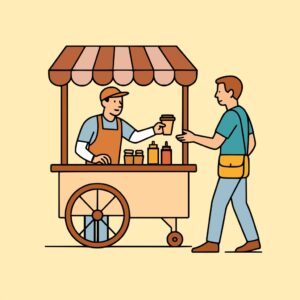Business
Sealing Success: Why Small Food Businesses Should Embrace Packaging Automation
You’ve perfected your grandmother’s sauce recipe. Your cookies have a cult following at the farmer’s market. Maybe your cold brew concentrate has coffee lovers lining up at 6 AM. But here’s the thing—you’re still hand-packing everything, and your wrists are starting to protest.
Sound familiar? Let’s talk about why packaging automation isn’t just for the big players anymore.
The Real Cost of Hand-Packing (Spoiler: It’s Not Just Time)
Picture this: It’s 2 AM, and you’re still in your commercial kitchen, methodically filling jar after jar of your signature jam. Your back aches. Your partner’s texting about missing another dinner. And tomorrow? You’ll do it all over again.
Hand-packing isn’t just stealing your time—it’s limiting your growth. Every hour you spend sealing bags is an hour you’re not developing new products, meeting potential retail buyers, or actually sleeping. Plus, let’s be honest about the hidden costs: inconsistent fill levels that irk customers, the occasional contamination from tired hands, and those products you had to toss because the seal wasn’t quite right. Continue on for more info in our small food business automation guide.
When Automation Makes Sense for Your Business
You don’t need to be producing thousands of units daily to benefit from automation. Actually, if any of these sound like you, it’s time to consider making the leap:
- You’re turning down orders because you can’t pack fast enough
- Your “packaging parties” with friends are becoming less party, more obligation
- You’ve caught yourself dreaming about a machine that could just do this for you
- Inconsistent packaging is affecting your brand’s professional image
- You’re spending more than 15 hours a week on packaging alone
Here’s what most small food entrepreneurs don’t realize: entry-level packaging equipment has become surprisingly affordable. We’re talking about machines that cost less than what you’d spend on labor for a part-time packer over six months.
Starting Small: Your First Steps into Automation
You don’t have to automate everything at once. Start where it hurts most.
Maybe it’s a simple tabletop filling machine for your sauces—something that ensures every bottle gets exactly 12 ounces, every single time. Or perhaps it’s a heat sealer that gives your granola bags that professional, airtight seal that keeps products fresh and makes them retail-ready. These machines aren’t massive industrial monsters. Many fit comfortably on a standard prep table.
The beauty of starting small? You learn what works for your specific products without breaking the bank. That semi-automatic depositor you bought for your brownie batter might surprise you by working perfectly for your new truffle filling, too.
The Unexpected Perks Nobody Talks About
Sure, automation speeds things up. But here’s what sellers rarely mention: the confidence boost is real. When you know every package looks identical, weighs the same, and seals perfectly, you walk into that meeting with Whole Foods differently. You price your products fairly because you know your true costs. You sleep better because tomorrow’s farmers market prep won’t destroy your Thursday night.
And your customers? They notice. Consistent packaging signals professionalism. It says you’re serious about your craft.
Making the Investment Work
Think of packaging automation like hiring your most reliable employee—one who never calls in sick, doesn’t need breaks, and produces consistent results every time. The ROI often surprises small food businesses. That $3,000 bottle filler? If it saves you 10 hours weekly, it pays for itself in freed-up time within months.
You’ve already taken the brave leap of starting a food business. Embracing automation is just the next step in building something sustainable—for your products, your customers, and yes, your sanity too.






